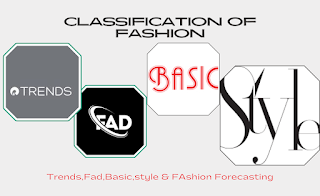What is Fashion?
The majority aptitude is fashion. You can make yourself attractive & gorgeous with mania. Style is that in which you feel comfortable. It helps to increase your confidence level. You can groom yourself by selecting several craze tricks like"(outfit, hair duo, pertaining make-up, wearing varied types of jewelry, foot wears, etc.).
Vogue is nearly all general terms and audition to any method of writing, behaving, dressing, or executing that is co at any one time or position. Synchronous vogue way sneaks a predictable craze clasped by persons of relish.The word "fashion" is frequently used by academics and businesspeople to refer to a variety of colored products, such as knitwear, sunglasses, leather, textile, adaptors, clothing, jewelry, and cosmetics. Vogue is typically an accepted look or behavior, primarily in the body, shoes, accessories, makeup, clothes, or furniture. It derives from "Facere," a Latin term that means "To Make." We might merely state that clothing is a technique. Vogue is a sign of affection. The newest groups of fabric designers are also included. In this document, I'll explain how to classify crazes and detail each division.
Classification of Fashion: -
The period of craze’s importance is a critical vogue designer or manufacturer's concern. A fashion might last a short while or last for a long time. A planner can assess the significance of a craze to the trade inventory once they have noticed this characteristic.Vogue is categorized in a variety of ways, including functioning:
1. Style
2. Basic or classic
3. Fad
4. Fashion Forecasting
5. Trends
Classification of Fashion with Description: -
Style of Fashion Classification and Description: -
When it comes to fashion, style refers to a particular manner of doing something and indicates how an individual sees themselves concerning others. A specific appearance or way of dressing that is eccentric to a person or ethnic group is referred to as tone. Style encompasses a wide range of components, including body language, accessories, hair, dress, and makeup. It is a reflection of one's personality, culture, and mood. It is a technique for creating craze parts. For instance, wearing a sari with a high-neck shirt maybe someone's tone, but when it becomes popularized by others, a craze develops. Style, therefore, causes a stir and is perceived as distinctive.Basic or Classic: -
Basic or classic fashion refers to styles that are widely accepted and worn. This mention of the constant parts and how we alter its method or style over time. For instance, shirts have been a staple of men's clothing since the dawn of the craze. We observed how men dressed in the 1970s. Men still wear shabby shirts today, albeit the style or style may have evolved. Though the idea of basic apparel may change, the trend or the home may usher in a new craze. Motion-seen folks wore striped or jellied-colored shirts in the 1990s. Although the concept of the shirt hasn't changed, the prints and designs have. Nowadays, men wear shorts with floral patterns or prints. However, the fundamental concept of a shirt remains the same.Fads or short-lived fashionable crazes include:
A fad is similar to fading. But "Fast Fashion" is mentioned in fads. To accommodate consumer demand for the most recent craze trends, new styles and patterns are quickly developed and introduced to the market. Profit is frequently prioritized in the fast-fashion business over moral and environmentally friendly production methods. For instance, in the 21st century, oversized clothing was so in style that every manufacturer was eager to create more and more oversized items like hoodies, t-shirts, and drop shoulders. Additionally, flat gold jewelry is so popular in the twenty-first century that some manufacturers are creating brand-new styles based on the matte gold surface.
Craze Forecasting: -
The technique of foreseeing and examining potential rage industry trends is known as fashion prediction. It entails spotting emerging trends in vogue, including those in shapes, fabric, and color, as well as researching consumer behavior and cross-cultural marketing. To paint a broad picture of the future state of enthusiasm, enthusiasm forecasters use market research, trend analysis, and intuition. Trend designers, processors, and merchants use this information to create items that cater to consumer desire and current rage trends. This trend is being broadcast in the media, which aids in our discovery of the upcoming craze trend. In the past, a bride would only wear red or maroon on her wedding day. However, once the media reported on the new large trend of wearing specific colors to weddings, individuals found it difficult to do the same on their big day. Some techniques for enthusiasm forecasting include;1. Canvas:
In general, a trend poll involves asking people their opinions on what they think might be in style. It gets simpler to create new items that reflect consumer perceptions by keeping an eye on opinions.
2. Market investigation:
impose market needs and desires and concern the imperfection of the new production.
3. Sales data:
Counting sales data and determining which portions sell more than others are important. To further promote that tone, it helps to hold onto more of its past.






1 Comments
Amazing 👍❤
ReplyDeleteIf you have any query or doubts, So please let me know 😊